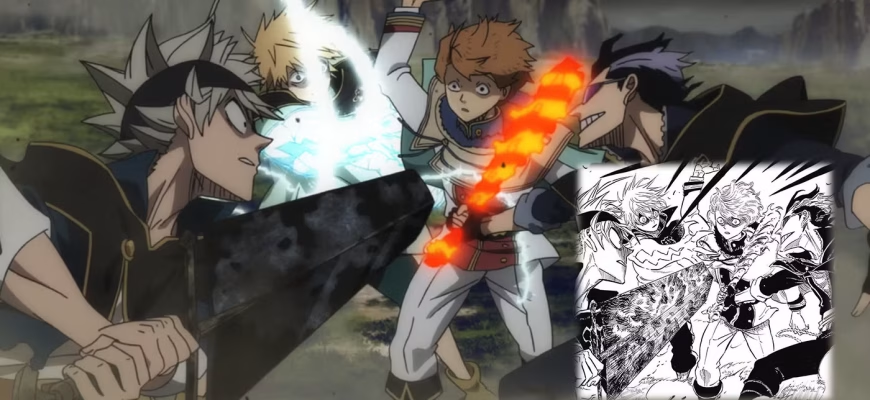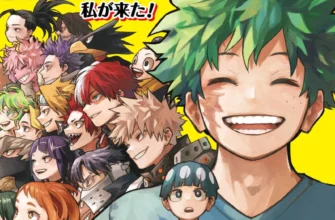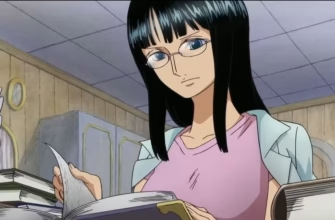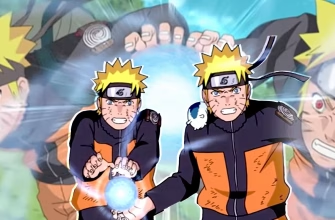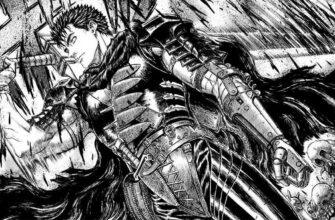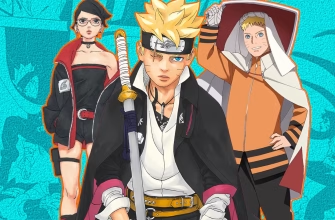The world of “Black Clover,” with its magically infused battles and diverse array of characters, has captivated audiences in both manga and anime formats. Understanding the distinctions between these beloved mediums can offer a deeper appreciation of the storytelling artistry involved. This article delves into the contrasts between the “Black Clover” manga and its anime adaptation, highlighting how each medium uniquely shapes narrative and experience.
The manga and anime share the same foundational plot, immersing fans in a tale of rivalry, ambition, and camaraderie within the Clover Kingdom. Despite this shared storyline, differences in storytelling emerge through pacing, the inclusion of filler episodes, and adaptive choices that set the two formats apart. Visuals in the manga captivate with detailed artwork, while the anime enchants with dynamic animation and a resonant soundtrack.
Critical differences extend to character development, with the manga emphasizing backstory and the anime showcasing visual emotions. Notable arcs and unique elements are explored, revealing the impact on franchise popularity through manga sales and anime cultural imprint. Dive into this comparison to uncover the nuanced ways “Black Clover” entertains and engages its audience across both mediums.
- Overview of “Black Clover”
- Manga and Anime Background
- Shared Plot and Themes
- Key Differences in Storytelling
- Pacing Differences
- Inclusion of Filler Episodes
- Original Content vs. Adaptation
- Visual and Auditory Experience
- Artwork Style in Manga
- Animation and Soundtrack in Anime
- Character Development
- Manga’s Focus on Character Backstory
- Anime’s Emphasis on Visual Emotions
- Notable Arcs and Events
- Royal Knights Selection Test
- Tournament Arc Presentation
- Unique Elements in Each Medium
- Exclusive Manga Spin-offs
- Anime-Only Episodes
- Thematic Exploration
- Rivalry and Ambition
- Camaraderie in Clover Kingdom
- Impact on Franchise Popularity
- Manga’s Influence on Sales
- Cultural Impact of the Anime
Overview of “Black Clover”
“Black Clover” is an anime adapted from Yūki Tabata’s manga. Produced by Studio Pierrot, it unfolds in a world where magic is everything. However, the protagonist, Asta, stands out as the only person lacking magical powers. Instead, he gains anti-magic abilities, allowing him to negate other magic. With this unique strength, Asta dreams of becoming the Wizard King, the highest title among Magic Knights. The series explores themes of class, inequality, and discrimination, contributing to its appeal. Known for its fast pace and creative power system, “Black Clover” captivates audiences with its dark, magical settings.
Manga and Anime Background
“Black Clover” began as a manga by Yūki Tabata and was brought to television by Studio Pierrot. The anime debuted with a simulcast from Japan, allowing international fans to watch new episodes in real-time. It spans four seasons and includes a total of 170 episodes, featuring intense battles and notable character development. Asta, the central character, wields anti-magic powers which set him apart in a world teeming with magic. The anime adaptation highlights themes of inequality and class, which resonate with many viewers. Its engaging story and dynamic character arcs have made “Black Clover” popular within the anime community.
Shared Plot and Themes
The plot of “Black Clover” centers around Asta, a boy living in a world filled with magic yet born without any. Despite this, he gains anti-magic powers and dreams of becoming the Wizard King, defying all odds. The story delves into themes of class, inequality, and discrimination, as Asta joins the Black Bulls, an unconventional squad of Magic Knights. Throughout his journey, Asta confronts powerful foes, showcasing a blend of action and character growth. The anime stands out in the shonen genre by featuring a hero who starts powerless, offering a refreshing take on the magical academy trope. The narrative’s fast pace and creative power dynamics contribute to its captivating allure.
Key Differences in Storytelling
Black Clover stands out in the anime world for its unique storytelling elements. At the center is Asta, a rare protagonist without magic in a world built upon it. This twist not only sets the series apart but also keeps fans captivated as Asta embarks on his journey to become the Wizard King. His determination and anti-magic abilities introduce unconventional dynamics into the story, providing an exciting and unpredictable plot. The narrative briskly advances, woven with themes like class inequality and discrimination, which enriches the fantasy setting with more profound layers. The diverse magical powers in the story also keep the battles fresh and engaging, forming a central pillar of its enchanting storytelling.
Pacing Differences
In the anime adaptation of Black Clover, the pacing shifts slightly compared to the manga. By covering the first 27 volumes, the anime faces challenges in balancing the storyline within a limited number of episodes. This results in some story arcs being condensed or stretched, which affects how events unfold. For example, pivotal scenes that span multiple chapters in the manga might be presented abruptly in a single episode of the anime. The shared ambition of Asta and Yuno to become the Wizard King experiences pacing variations due to these structural constraints. Thus, manga readers often encounter a more intricate exploration of events compared to the anime’s swift rendition.
Inclusion of Filler Episodes
Filler episodes in Black Clover introduce a different tone and feel from the main narrative. These episodes, often lighter and parodic, contrast sharply with the intense plot. For some viewers, the shift to such episodes can feel disorienting, especially if they’re placed amid climactic sequences. Nevertheless, these fillers provide a strategic break from the main storyline, allowing a different viewing experience. Additionally, content like “Squishy! Black Clover,” which exists outside the main timeline, and special episodes like “The All Magic Knights Thanksgiving Festa,” expand the universe with different styles and portrayals. These variations influence the overall dynamic and pacing of the anime series.
Original Content vs. Adaptation
The adaptation of Black Clover from Yūki Tabata’s manga by Studio Pierrot offers a vivid world where everyone but Asta can wield magic. The anime aims to capture his journey toward becoming the Wizard King over 27 volumes of manga. Both the manga and anime delve into themes of inequality and discrimination, enriching the fantasy plot with a social commentary. The original manga also provides special side stories and alternative versions, which add depth to the Black Clover universe beyond what the anime portrays. Furthermore, events such as Jump Festa often reveal new projects, showcasing the ongoing popularity and expansion of the series in both its original and adapted forms.
Visual and Auditory Experience
Enhancing the movie-going experience is essential for audience satisfaction. AMC is making strides by offering Open Caption showtimes across 240 locations in the United States. This initiative aims to improve both visual and auditory experiences for guests. However, the transition from film to digital projection has impacted these experiences negatively. It has decreased the need for skilled union projectionists, leading to less attention being paid to the details of movie presentations. Auditory quality has suffered significantly due to poorly calibrated digital sound systems. This can be especially inconvenient for elderly audiences who might struggle with sound clarity. The shift has led to inexperienced staff managing these important elements, often resulting in an unsatisfactory theater experience.
Artwork Style in Manga
The Black Clover manga, illustrated by Yūki Tabata and published by Shueisha, showcases a unique art style that beautifully complements its fantasy adventure narrative. This series brings the magical world to life through dynamic action scenes that captivate readers. The artwork highlights the magical elements central to the story, showcasing a blend of dark and mystical themes. These visual motifs create a captivating contrast that draws readers deeper into the narrative. Each character in Black Clover is brought to life with distinctive designs, emphasizing their individuality and roles within the story. Tabata’s art style successfully enhances the narrative’s depth, making it a memorable read.
Animation and Soundtrack in Anime
Studio Pierrot has adapted Yūki Tabata’s Black Clover manga into a vibrant TV anime series that has thrilled many fans worldwide. This adaptation has gained popularity thanks to its engaging animation and compelling soundtrack. The anime’s opening theme, “Haruka Mirai,” performed by Kankaku Piero, sets an energetic tone for the series. Takuto Akizuki and Naohiro Yokoyama’s musical compositions provide a resonant backdrop that enhances the fantastical adventure unfolding on screen.
The voice acting in Black Clover anime is another significant element of its success. Gakuto Kajiwara voices Asta, while Kana Yuuki lends her voice to Noelle in the Japanese version. This talented cast brings life and emotion to the characters, enriching viewers’ connection to the story. The anime’s sound mix, presented in stereo format, further elevates the viewing experience. However, fine-tuning and calibration can greatly affect the auditory quality during broadcast, similar to challenges faced in theaters.
Tatsuya Yoshihara’s contribution as both Director and Animation Director has been crucial in maintaining the anime’s high quality. His expertise ensures that each episode remains true to the manga’s vision, translating its intricate artwork and intense action scenes to the animated format. These elements combined make Black Clover a standout anime series.
Character Development
In the world of Black Clover, character development is a key focus, especially for Asta, the series’ protagonist. Born without magical powers, Asta’s journey is unique in a realm dominated by magic. His story highlights themes of perseverance and growth, as he strives to become the Wizard King. Alongside the Black Bulls, Asta faces numerous challenges that test his resolve. Despite lacking magic, his physical strength and determination are central to his character. The relationships he forges with others in this world reinforce the importance of camaraderie and teamwork. As the series progresses, Asta’s reliance on anti-magic pushes those around him to adapt and grow, promoting a narrative filled with both personal and collective development.
Manga’s Focus on Character Backstory
The Black Clover manga dives deep into character backstories, enriching its narrative with themes of social inequality and personal ambition. Asta’s journey from a boy with no magic to one bearing anti-magic powers is emphasized, showing his drive to become Wizard King. The manga effectively portrays his struggles with class discrimination, building on his determination to overcome societal limitations. Characters like Yuno provide a contrasting narrative, highlighting the role of background in shaping their paths. Through these stories, the manga delves into themes of class and social structures, making the world of Black Clover feel complex and real. Each character’s past adds depth to the current narrative, portraying a richly detailed setting influenced by these profound histories.
Anime’s Emphasis on Visual Emotions
The anime adaptation of Black Clover by Studio Pierrot brings its magical landscape to life with stunning visuals. Asta’s anti-magic powers are showcased in dynamic and contrasting sequences that stand out in a world filled with vibrancy. This visual style amplifies the intensity of battles and characters’ determination. The colorful art enhances emotional expression, allowing viewers to connect deeply with the characters’ journeys. Detailed animations highlight character growth and emotional depth, particularly in moments of high stakes. Visual storytelling becomes a powerful tool, driving home themes of perseverance and friendship that define the series. By engaging viewers emotionally, the anime successfully translates the rich narrative and character arcs from the manga into a captivating on-screen experience.
Notable Arcs and Events
“Black Clover” is an appealing anime series filled with exciting story arcs and memorable events. The series follows main characters Asta and Yuno, voiced by Gakuto Kajiwara and Nobunaga Shimazaki, respectively. These young fighters dream of becoming the Wizard King. They are joined by a cast of dynamic supporting characters, such as Yami Sukehiro and Julius Novachrono. Yami, voiced by Junichi Suwabe, is crucial to many storylines, while Julius offers wisdom and guidance. The vibrant ensemble also includes Mereoleona Vermillion, voiced by Junko Minagawa, who adds depth and intensity to significant events. The show’s complexity is enhanced by these characters and the compelling storylines crafted by the production talents of Tatsuya Yoshihara and Ayataka Tanemura.
Royal Knights Selection Test
The Royal Knights Selection Test is a pivotal arc in “Black Clover.” It highlights a unique competition where characters vie for a spot in the elite Royal Knights. Unlike the usual one-on-one duels, this test features an intriguing format that challenges participants in unexpected ways. Asta, infusing his trademark enthusiasm and determination, stands out with his performance. His relentless motivation is evident as he faces challenges and obstacles. Meanwhile, Xerx offers a contrast with his lackluster interest in the competitive spirit of the event. Various series characters engage in intense matches, showcasing their skills and strategic prowess. This arc not only underlines Asta’s growth but also emphasizes the different personalities and abilities within the series.
Tournament Arc Presentation
Though the specifics of the Tournament Arc Presentation are less documented, it remains a vital part of the “Black Clover” series. This segment demonstrates a thrilling display of action and strategy among participants. The arc acts as a platform for various characters to shine, displaying their unique magic and combat styles. Each match presents new challenges, pushing characters to adapt and evolve. Tournaments in anime often showcase dramatic battles and rivalries, enhancing the storyline’s thrill and depth. For “Black Clover,” such arcs not only entertain but also explore themes of perseverance and camaraderie among characters. The series uses these moments to build suspense and engage viewers, solidifying its status as a standout in the genre.
Unique Elements in Each Medium
Black Clover offers a captivating experience through its different formats. The anime adaptation, crafted by Studio Pierrot, presents a fast-paced storyline. It revolves around a unique power system in a world full of magic. Yet, the protagonist, Asta, stands out due to his anti-magic abilities. In contrast, the Black Clover manga by Yūki Tabata dives into darker themes. It examines class inequality and discrimination. Asta’s journey to become the Wizard King involves overcoming his lack of magic using sheer physical strength. The adaptation of the manga into an anime was a significant effort. It involves the creativity of notable directors like Tatsuya Yoshihara and Ayataka Tanemura. These differences make Black Clover stand out in both mediums. The series subverts a common shonen trope by contrasting Asta, a powerless character, with a superpowered world.
Exclusive Manga Spin-offs
Unfortunately, there isn’t specific information about exclusive manga spin-offs for Black Clover. This omission may be due to a lack of widely recognized spin-offs specific to the Black Clover manga series. However, like many anime and manga series, fans often speculate or wish for additional narratives. These could potentially offer deeper insights into side characters or unexplored realms in Asta’s world. In the manga industry, spin-offs often serve to enhance the main storyline. They allow readers to engage with beloved characters in new contexts. While Black Clover’s primary focus remains on the central narrative, there is always room for future expansions.
Anime-Only Episodes
Black Clover’s anime brings unique content through its anime-only episodes. These episodes add depth to the already rich story. One notable special episode is “The All Magic Knights Thanksgiving Festa.” This episode gives fans a deeper understanding of the Magic Knights beyond the main plot. Additionally, Black Clover released original video animations (OVAs) like the Jump Festa 2016 OVA. Even though these OVAs provide extra content, the Jump Festa 2016 OVA isn’t available for legal streaming. Another interesting anime-only episode is “Squishy! Black Clover.” It presents a different style, deviating from the main storyline’s tone. This diversity in content ensures that fans have a wide range of narratives to enjoy. Specialized episodes and spin-offs released during the anime run supplement the main narrative, offering fans new perspectives and entertainment.
Thematic Exploration
“Black Clover” is a notable anime that delves into themes of class, inequality, and discrimination. In a world where magic determines social standing, the story follows Asta, who lacks any magical ability. Asta’s character symbolizes perseverance and physical strength, illustrating how determination can overcome the challenges posed by societal norms. The series also explores ambition and personal growth, as Asta embarks on a journey to become the Wizard King. This dream drives him to push past his limitations. The series stands out with its creative power system, showcasing a wide range of magical abilities among its diverse characters. The narrative maintains a fast pace, drawing viewers into the escalating challenges and prejudices faced by the protagonists.
Rivalry and Ambition
Asta and Yuno, two orphans raised together, embody a profound rivalry in “Black Clover.” Both aspire to become the next Wizard King, the highest authority in the Clover Kingdom. Although Asta lacks mana, his ambition and physical prowess enable him to unlock a five-leaf grimoire with unique anti-magic powers. In contrast, Yuno is a magical prodigy, possessing a rare four-leaf grimoire, once wielded by the kingdom’s first Wizard King. Their differing abilities fuel their friendly competition. As they join separate Magic Knight squads, Asta and Yuno’s rivalry intensifies, driven by their mutual desire to outshine each other. Their journey showcases the strength of ambition, illustrating how determination can lead to personal growth and success.
Camaraderie in Clover Kingdom
Camaraderie is a central theme in the world of “Black Clover.” The story celebrates friendship and teamwork as vital elements among its characters. The anime adaptation has been lauded for weaving in meaningful lessons about togetherness and resilience. This emphasizes that unity is crucial to personal and collective success. Both the manga and anime highlight camaraderie, showing characters of all genders equally impacting the narrative and battles. Critics praise the uplifting message of working together, viewing it as a driving force in overcoming challenges for shared goals. Through its diverse cast, “Black Clover” explores the power of camaraderie, where each character’s unique strengths contribute to the group’s dynamic and success.
Impact on Franchise Popularity
Black Clover has made a significant mark in the anime world. It was the most-watched series on Crunchyroll in 2020, reaching audiences in 87 countries. This shows its widespread appeal and the reach of its fanbase. Black Clover’s unique storyline and diverse characters helped it secure a spot in Crunchyroll’s Top 100 anime of the 2010s. With almost 200 episodes and a film, the franchise has shown its ability to keep viewers engaged. Produced by Studio Pierrot, the anime stays thrilling by following a fast-paced story and an exciting magic system. Its continued success is a testament to the show’s growing popularity and the loyalty of its fans.
Manga’s Influence on Sales
The success of the Black Clover manga is impressive, with over 18 million copies in circulation as of November 2022. This high figure signifies a robust global demand and highlights its popularity. The data from Anime News Network underlines the manga’s significant role in boosting its overall sales. The 18 million copies sold reflect a substantial readership and the manga’s commercial triumph. This milestone is pivotal in pushing the brand to new heights, contributing greatly to its global recognition.
Cultural Impact of the Anime
Black Clover is a popular shonen series, making a strong cultural impact. Highlighted by critics like Dale Bashir from IGN Southeast Asia, the series is celebrated for its influence. By partnering with major platforms such as Crunchyroll, the anime reaches a broad audience. The collaboration with voice actors like Gakuto Kajiwara for Japanese viewers showcases its cultural reach. The anime’s presence at events like Jump Festa marks its significance in the industry. Its ongoing popularity keeps fans excited about potential new episodes. Black Clover’s cultural presence continues to resonate, making it a beloved series worldwide.

